If you miss being able to slice into a log of cheese and spread it on bread or crackers, this fermented cashew cheese will give you back that experience.
And if you’ve ever been disappointed by the vegan cheese options at the grocery store or don’t have access to them, this recipe will be a godsend.
First, a simple mixture of cashews, vinegar, lemon juice, coconut oil, nutritional yeast, and seasonings gets blended until smooth. Then, it ferments for a day or two. Finally, the cheese gets shaped into a log (think a log of goat cheese) and hangs out in the fridge for a few hours. Once sliced, it’s easy to slice and spread (and is SO very tasty).
Hungry for even more vegan cheese?
Check out my complete guide to vegan cheese! It covers the best vegan cheese recipes to use for every situation (like Vegan Feta and Vegan Queso) and reviews the best vegan cheeses you can buy at the supermarket.
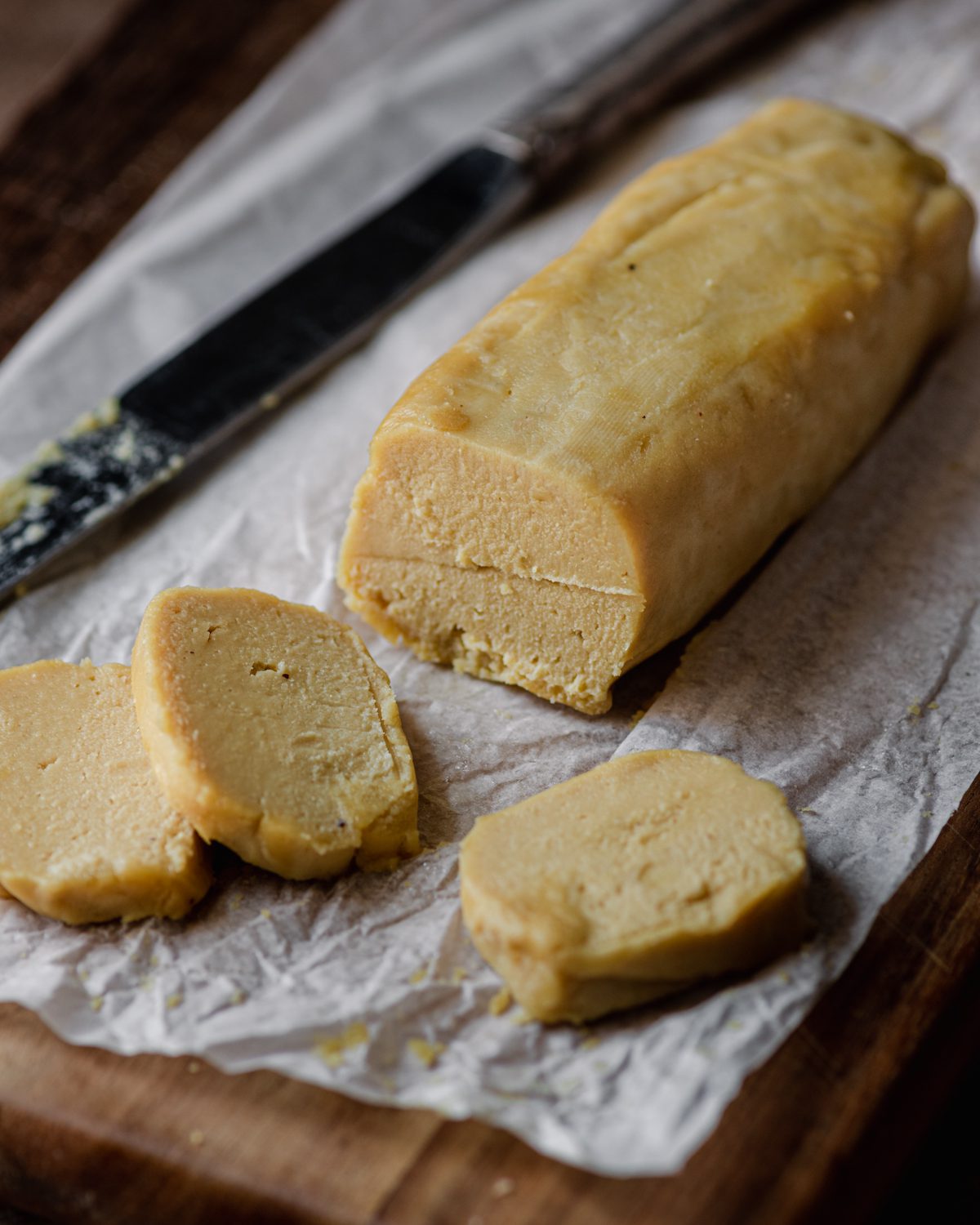
Why you’ll love this recipe
Sliceable and spreadable. Homemade vegan cheese recipes that are sliceable and/or spreadable are hard to come by, and if you don’t have access to vegan cheeses at your grocery store, this is an amazing option to keep in your fridge. The addition of coconut oil and very little liquid makes the cheese solid enough to hold its shape and to slice.
Easy and minimal ingredients. This recipe requires just 10 to 15 minutes of hands-on work and a bit of patience while the cheese ferments. And just 7 pantry-friendly ingredients!
Gourmet and flavorful. Despite being so easy to make, this cheese feels fancier than most homemade cheeses and is packed with flavor. In addition to having subtle cheesy vibes from nutritional yeast, it has so much more tanginess and umami than your standard vegan cheese thanks to fermentation.
Make ahead. Because this is a fermented cheese, it will continue to stay good in your fridge for several weeks… if you can resist eating it!
Wholesome but indulgent. Fermented cashew cheese has all the traditional dairy cheese flavors but it’s made with wholesome plant-based ingredients. Plus, the live bacteria created in the fermentation process are good for your gut!
If you’re interested in some of the crazy cool things cashews can do to recreate your favorite comfort foods, check out my crazy good Vegan Spinach Artichoke Dip or Vegan Moussaka!
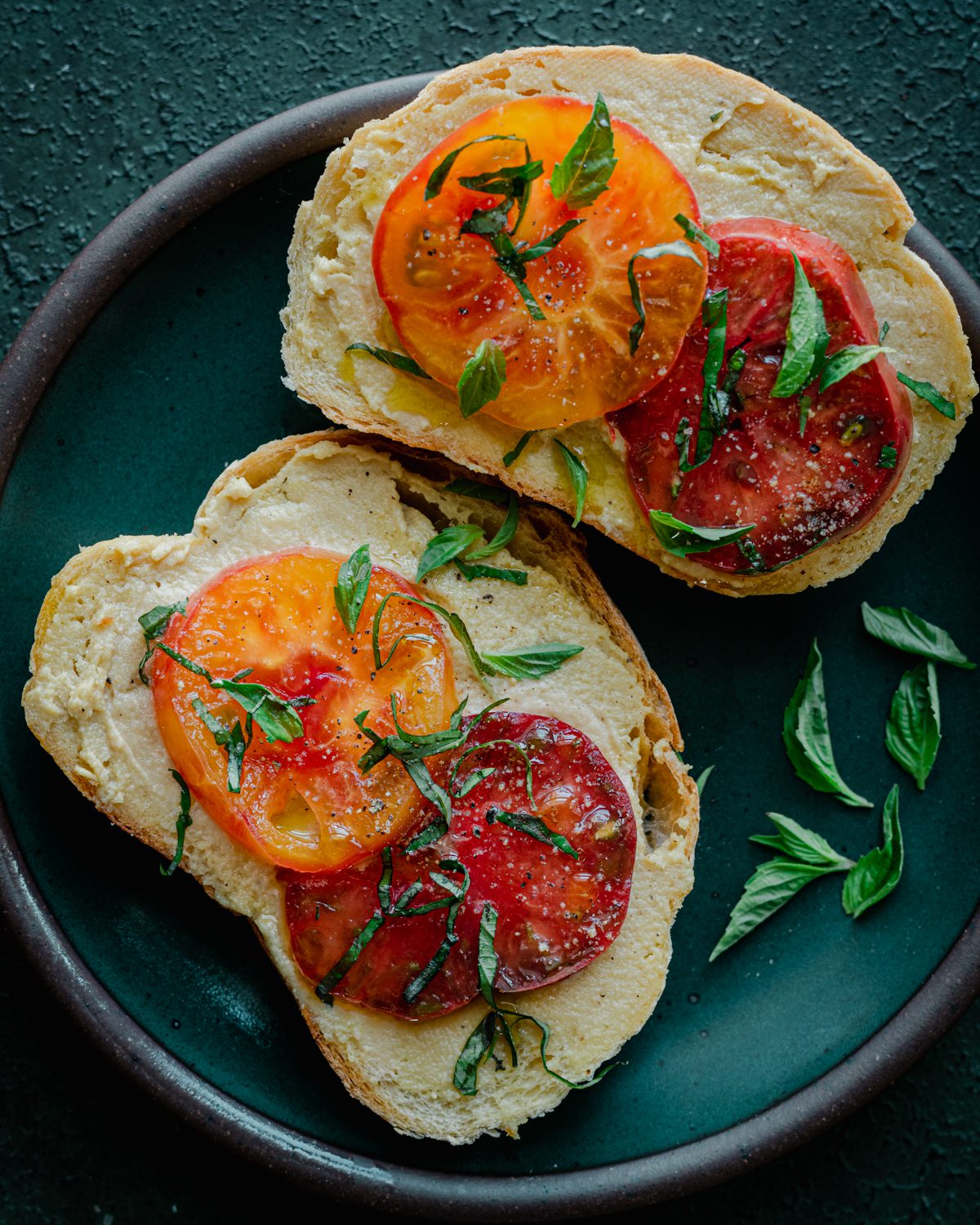
How to make this recipe
Add the soaked cashews, apple cider vinegar, lemon juice, and coconut oil to a high-powered blender. Blend on medium to high speed for several minutes, scraping down the sides of the blender several times as you go, until relatively smooth.
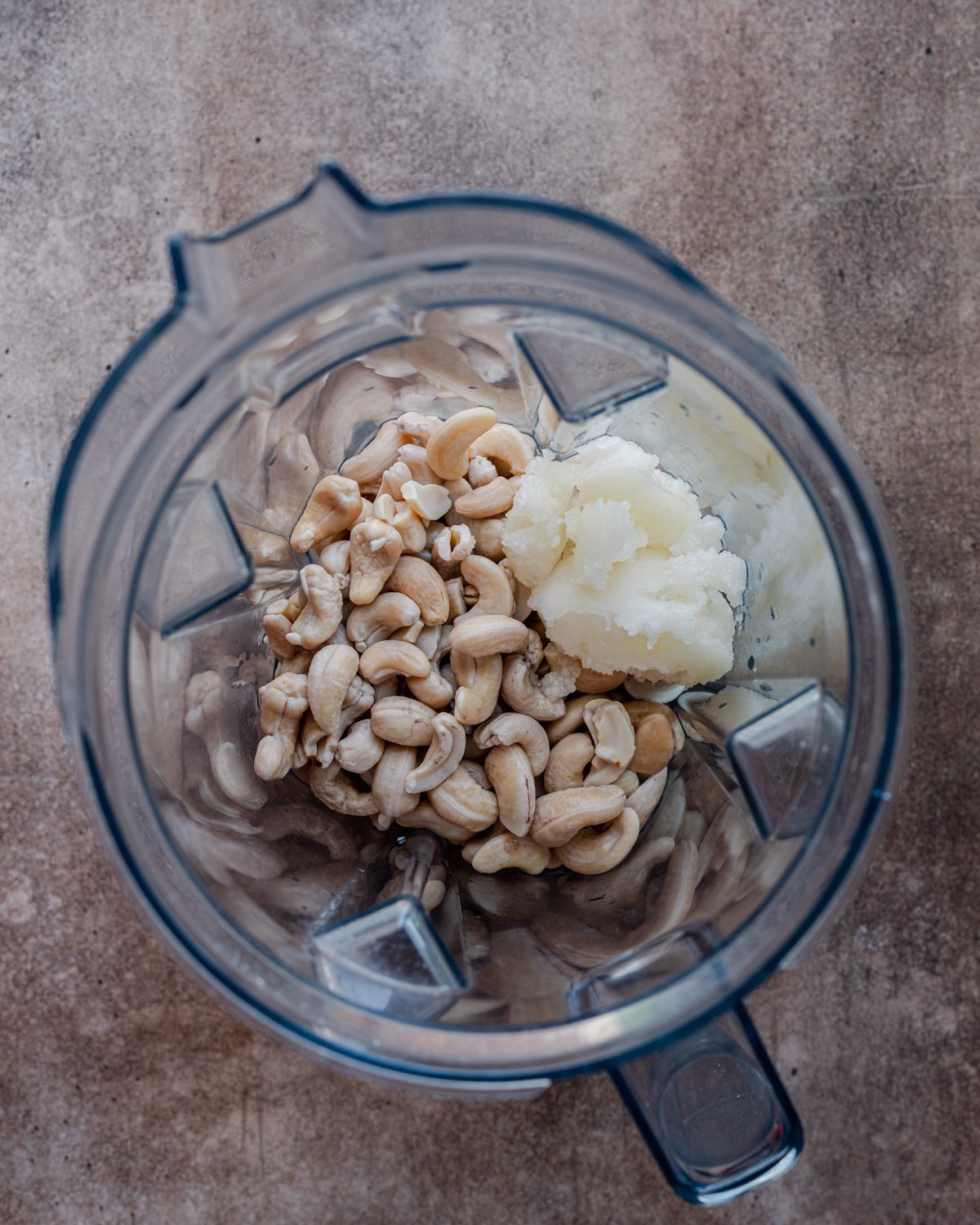
Add the nutritional yeast, garlic powder, onion powder, and salt. Blend again until completely smooth.
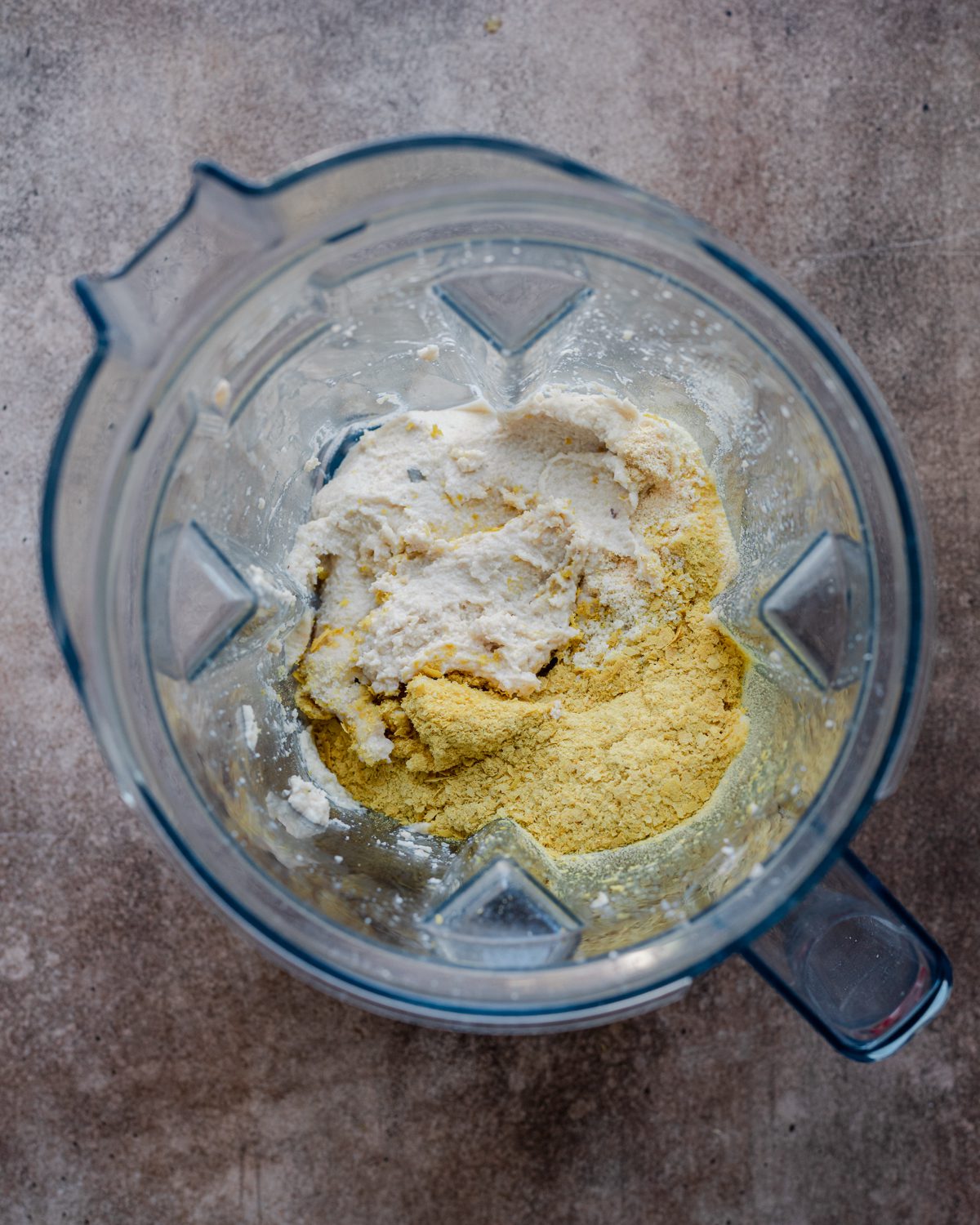
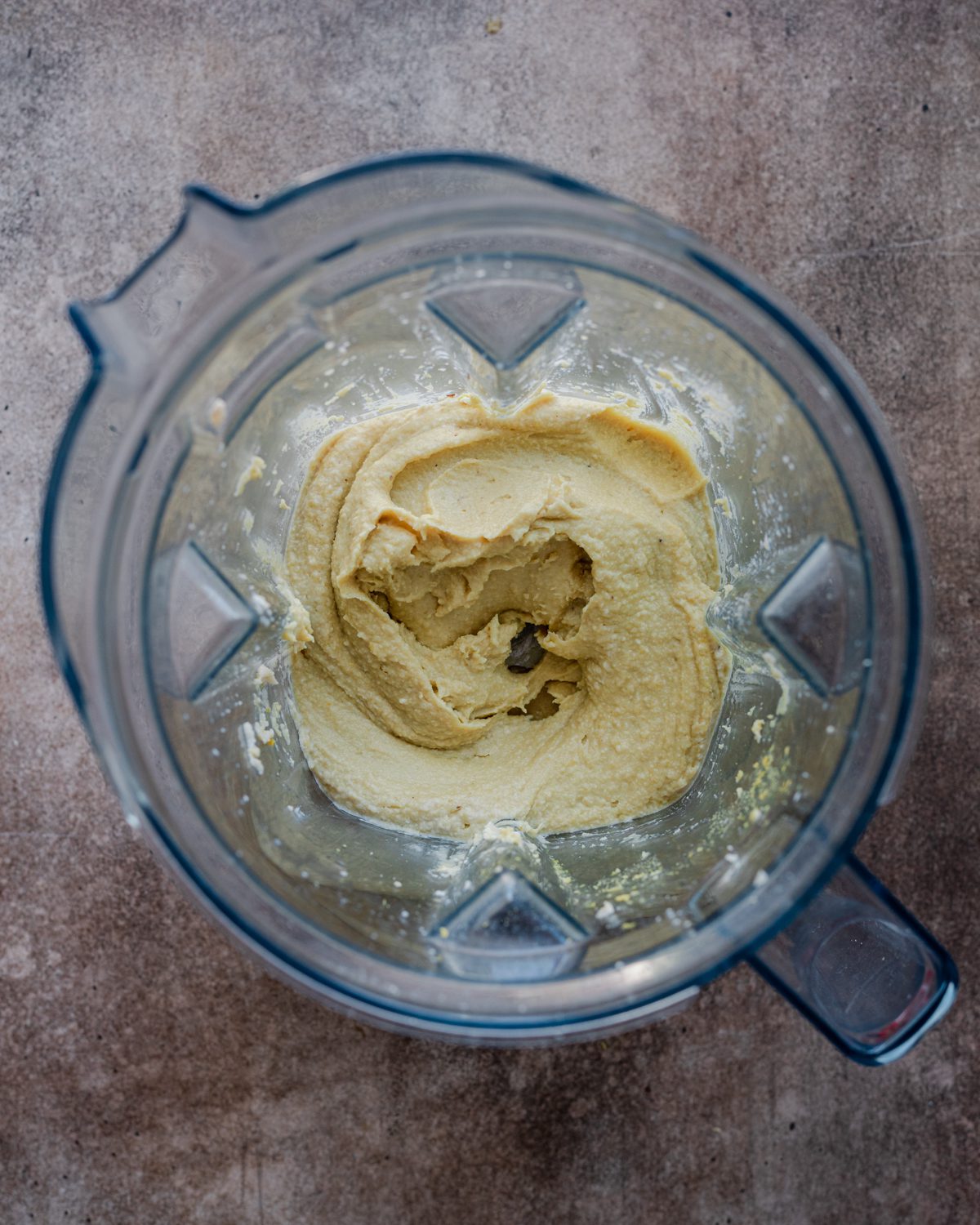
Transfer the cheese mixture to a clean mason jar (you can sterilize it if desired but it’s not necessary). Seal the jar and place in a warm spot to ferment for at least 16 hours, or up to 48 hours. (see “Tips” section for fermentation tips).
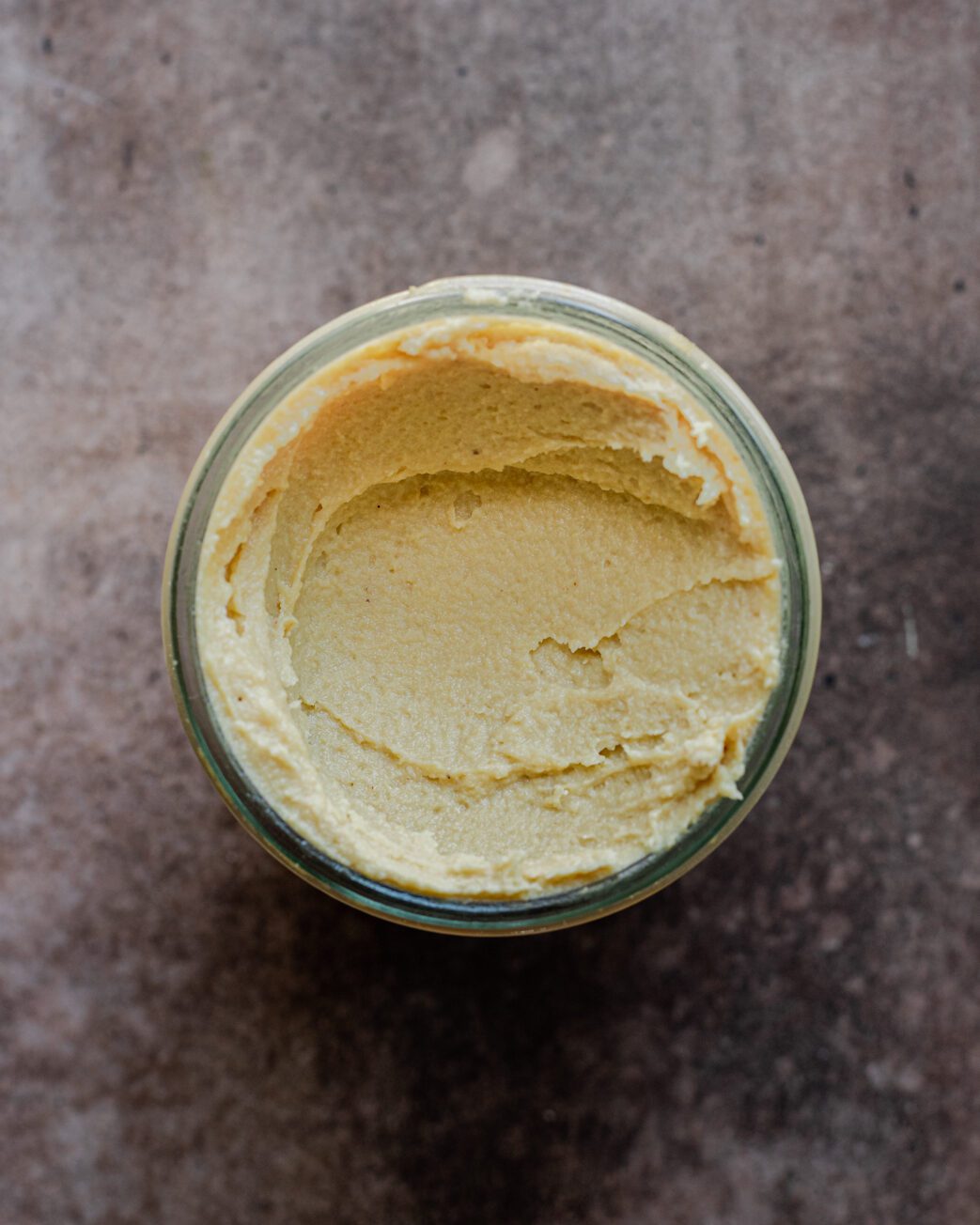
Stir the fermented cheese and transfer to the fridge for at least 4 hours to set.
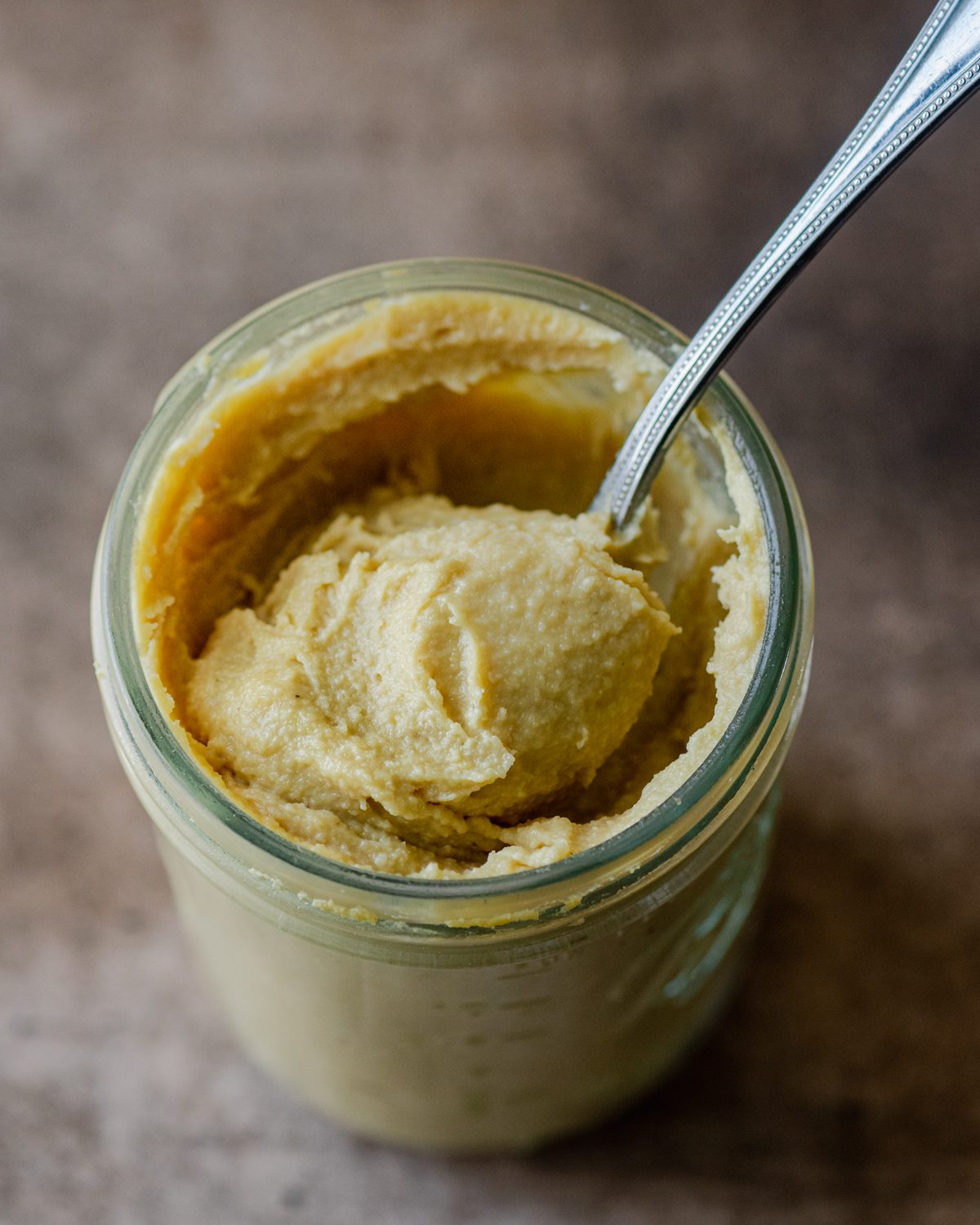
Once the cheese has solidified, scoop out half of it onto a sheet of parchment paper. Use a spoon to push it into a log-like shape.
Roll up the parchment paper and your hands to mold and shape the cheese into a log shape. Repeat with the other half of the cheese. Refrigerate the cheese logs for 2 hours, or more, to set.
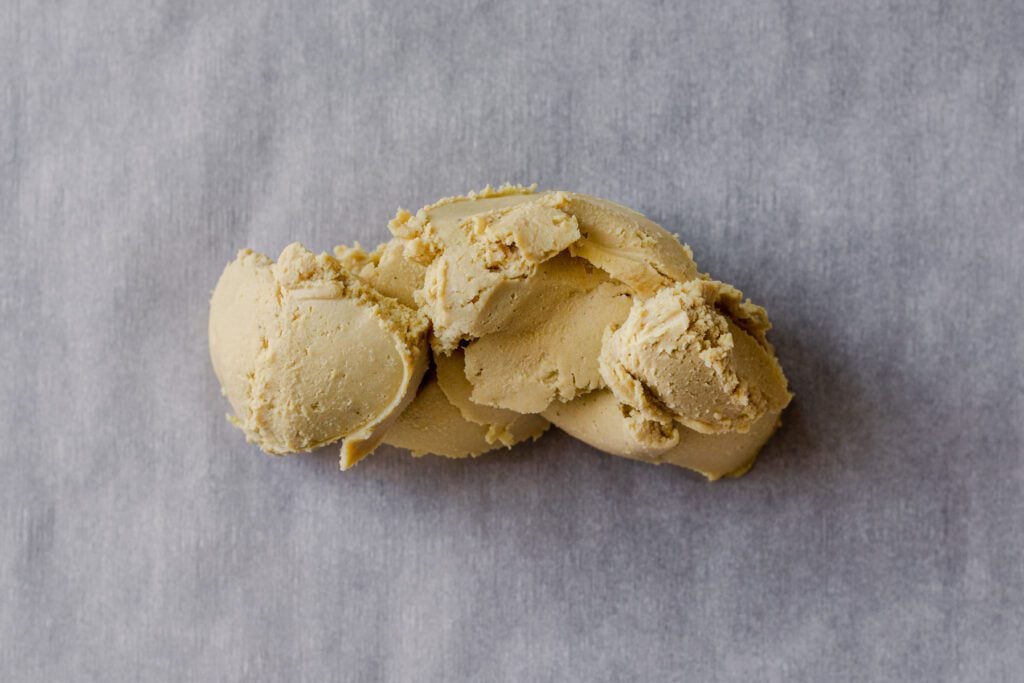
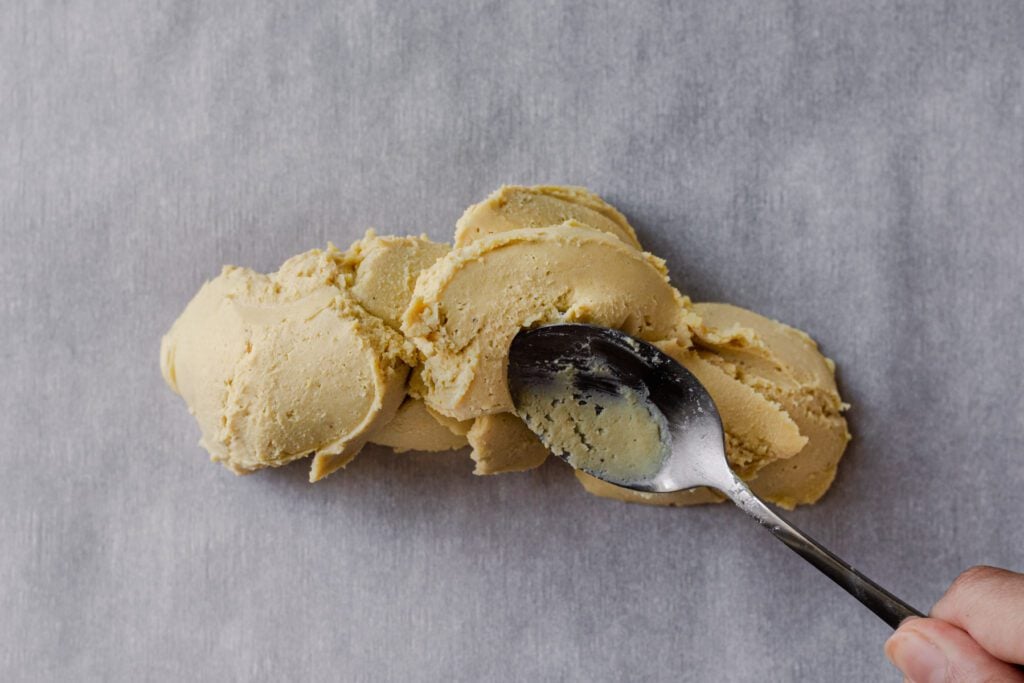
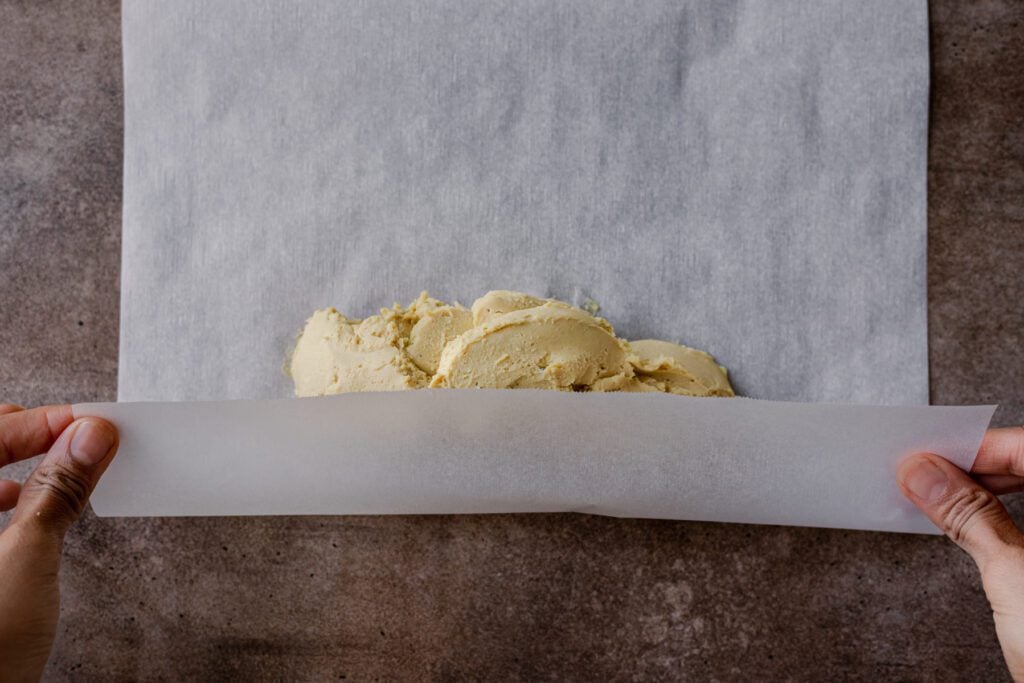
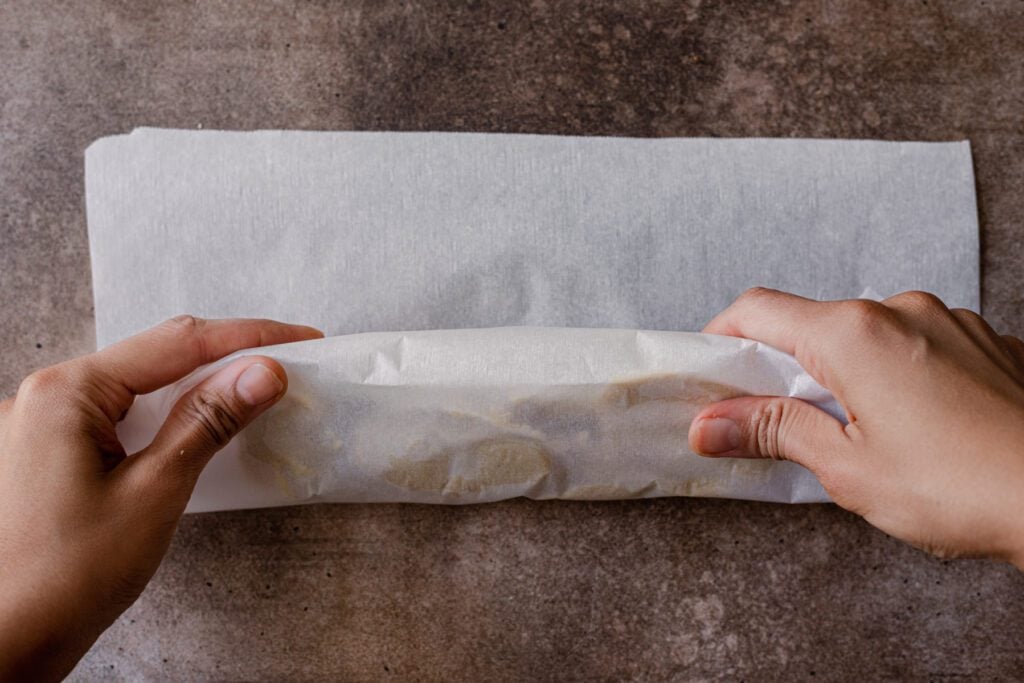
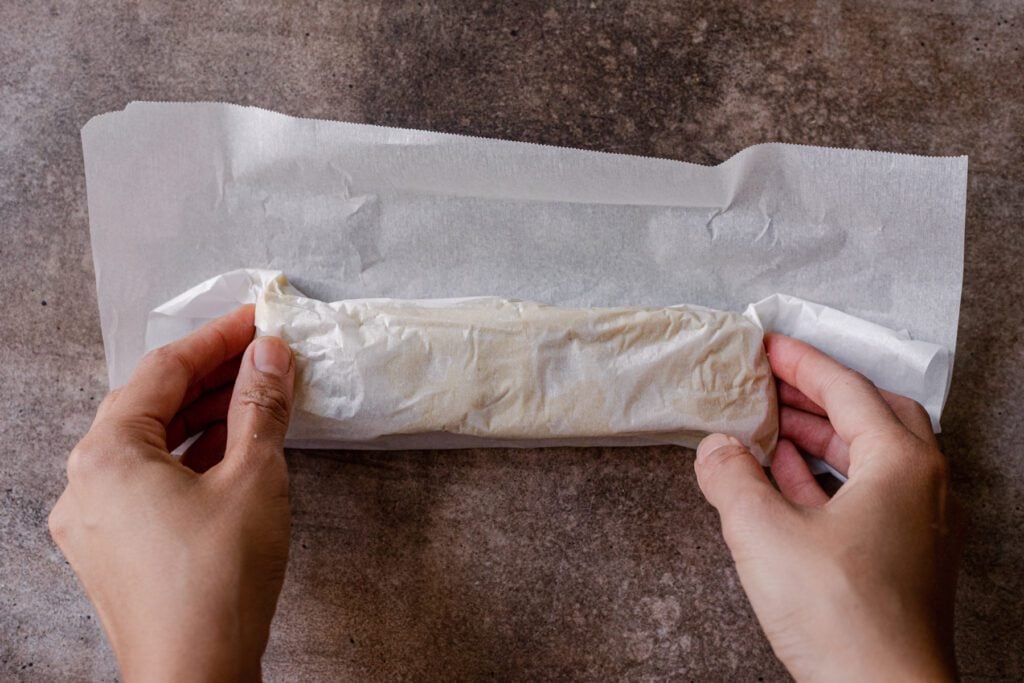
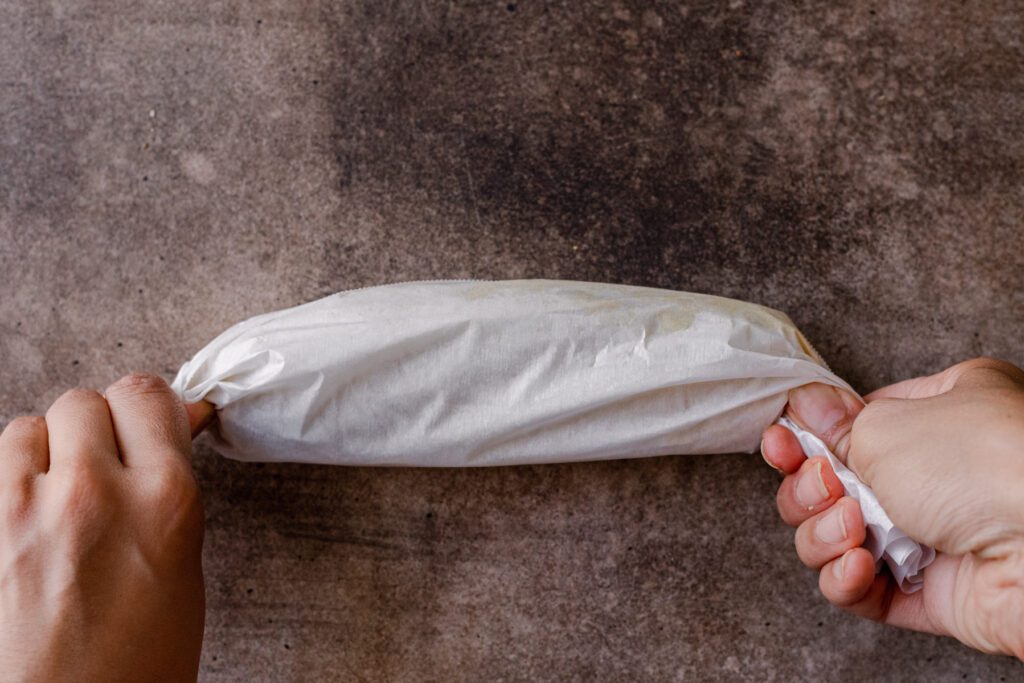
Once the cheese log is set, slice and spread as desired.
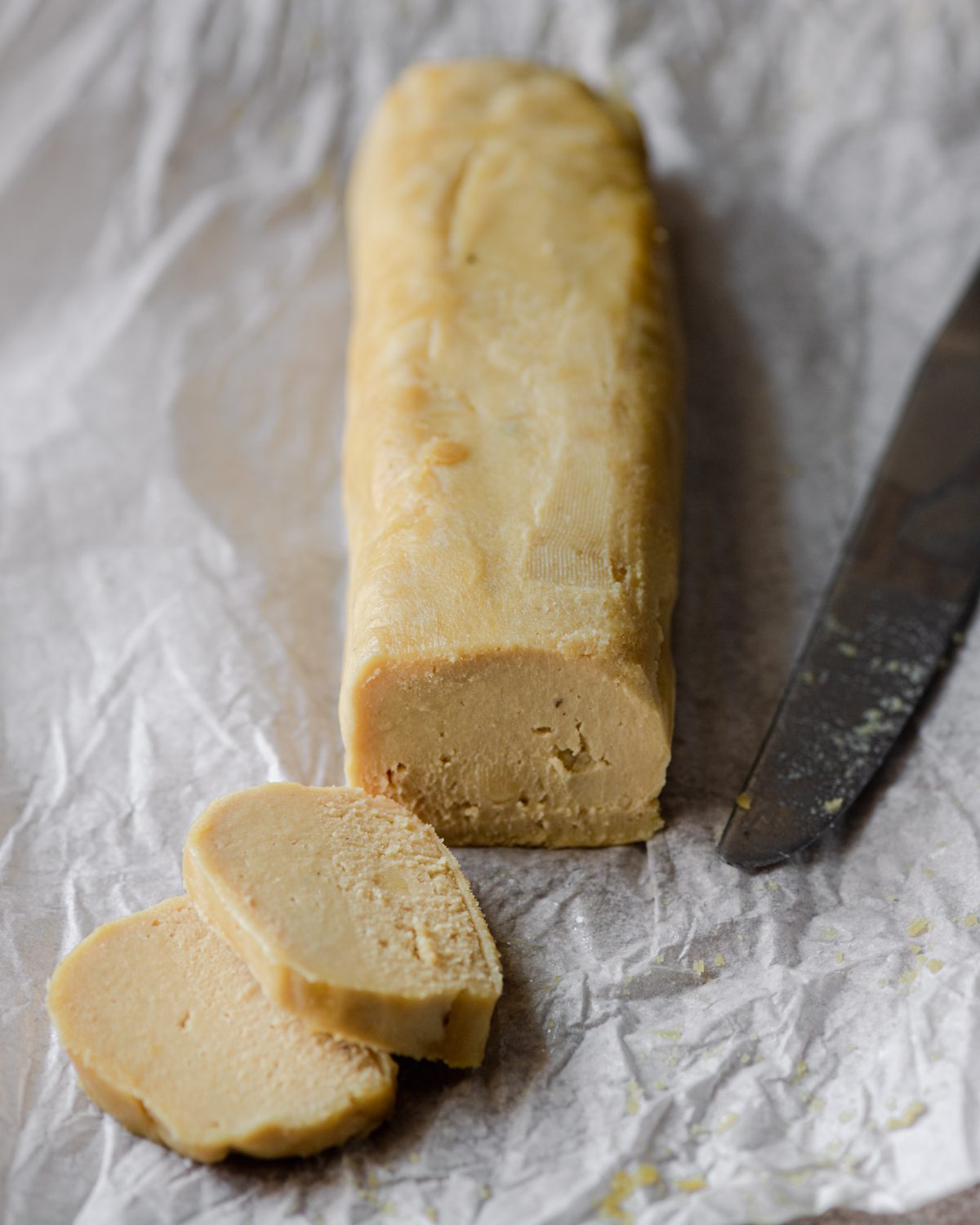
Tips for making this cheese
How to soften raw cashews.
I highly recommend soaking your cashews in cool water overnight, or boiling them on the stove for 20 minutes. Since there’s very little liquid, a proper soak or boil is necessary to fully soften the cashews.
Use a clean glass jar.
Wash your jar and lid with soapy warm water and dry well before adding your cheese and fermenting.
Use a high-powered blender.
Along the same lines, you’ll get the best, smoothest results with a high-powered blender, as you want a powerful machine to fully pulverize the cashews. Since there’s not much liquid, you’ll need to scrape down the sides several times as you go, especially if you have a large-sized blender container like me (I have the 64-ounce Vitamix container; it’s considerably easier with a smaller blender container).
Shake the apple cider vinegar.
It’s important to include a bit of the “mother” bacteria from the vinegar to start the fermentation process. Shaking the apple cider vinegar before pouring it ensures that the mother bacteria is evenly distributed.
Let it come to room temperature
If your cheese log has been in the fridge for quite awhile, let it sit at room temperature for 5 minutes to soften up. This will make it much easier to spread.
Where and how long to ferment the cheese.
One of the most important parts in the process is letting the cheese ferment in a warm place.
If it’s summertime, this could be your kitchen counter or pantry. If you live in a warm but not crazy hot climate like I do (Southern California), you can also ferment the cheese outside. Just make sure to not expose the jar to direct sunlight. I typically wrap the jar in ad dish towel during the day and set it outside; in the evening, I transfer it to the oven with the light bulb on (the warmth from the light is sufficiently warm for fermentation).
If it’s wintertime, you can just leave it in the oven as mentioned above. If that’s not an option, you’ll need to leave it out on a counter or in the pantry for at least a few days.
The warmer the temperature, the less time you should ferment it. The countertop when it’s not summer will take more time than in the oven with the light on. If the temperatuer is quite warm, consider fermenting for just 16 to 24 hours to avoid over-fermenting.
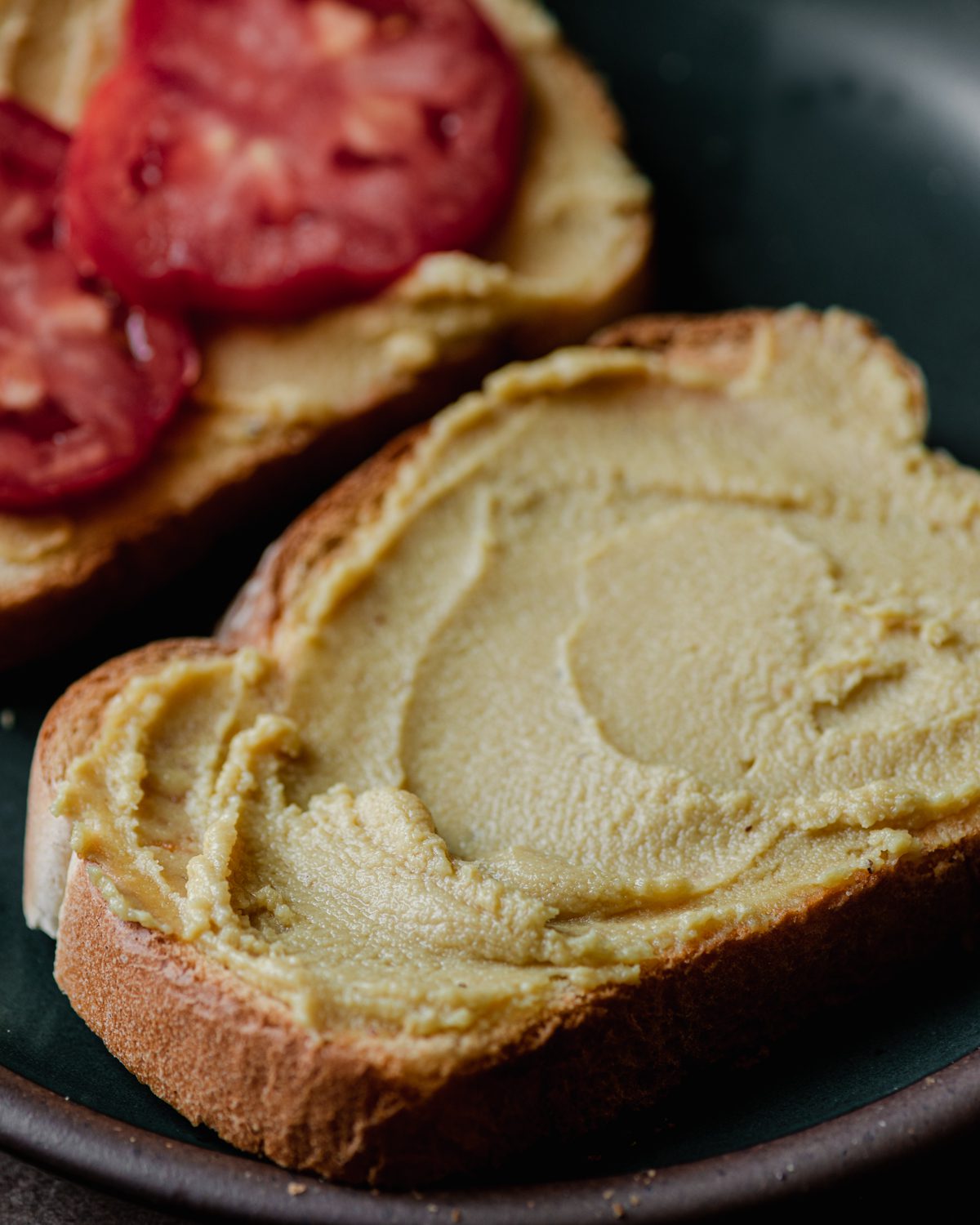
Frequently Asked Questions
The coconut oil is key for the texture of this cheese. As you might know, coconut oil has a high melting point compared to other oils (that’s why it’s solid at room temperature instead of liquid, like other oils). So when you refrigerate the cheese mixture, the coconut oil helps solidify it, leaving you with that sliceable texture.
If you are strictly oil-free, try my other oil-free cheese options (Vegan Queso and Nut-Free Cheese Sauce). If you are allergic to coconut products, you can try using olive oil, but I don’t know if you’ll get the same sliceable texture, as coconut oil is solid at room temperature.
NO! The combination of fresh garlic and oil at room temperature for more than a few hours can foster the growth of clostridium botulinum bacteria (aka botulism). It’s toxic and can cause bad severe food poisoning!
Roll it tightly in the parchment paper and store it in the fridge for at least 2 weeks. If the paper isn’t wrapped tightly, the edges dry out, so to avoid this, store the wrapped cheese in an airtight container.
Yes! Some flavor ideas are below. Just sprinkle them on after you’ve rolled the log and it’s hardened a bit. Use your hands to pat the mix-ins into the cheese. Then refrigerate again for 2 hours (or longer) to set.
– Sundried tomatoes + dried oregano
– Chopped dill + parsley
– Dried cranberries + crushed walnuts
– Pomegranate seeds + crushed pecans
How to use this cashew cheese
I have no doubt you’ll find countless uses for this delightful cheese, but here are a few to get you started:
- Spread it onto bread! My current favorite is a good crusty bread, a thick layer of fermented cheese, and heirloom tomatoes sprinkled with sea salt and pepper.
- Add some to a bowl as a dip for crudités or spread for crackers.
- Serve as part of a vegan charcuterie or cheese board with crackers, olives, and fruit.
- Use as a sandwich spread instead of mayo.
- Spread onto a pita round or flatbread and add your favorite toppings and bake in the oven for an easy pizza!
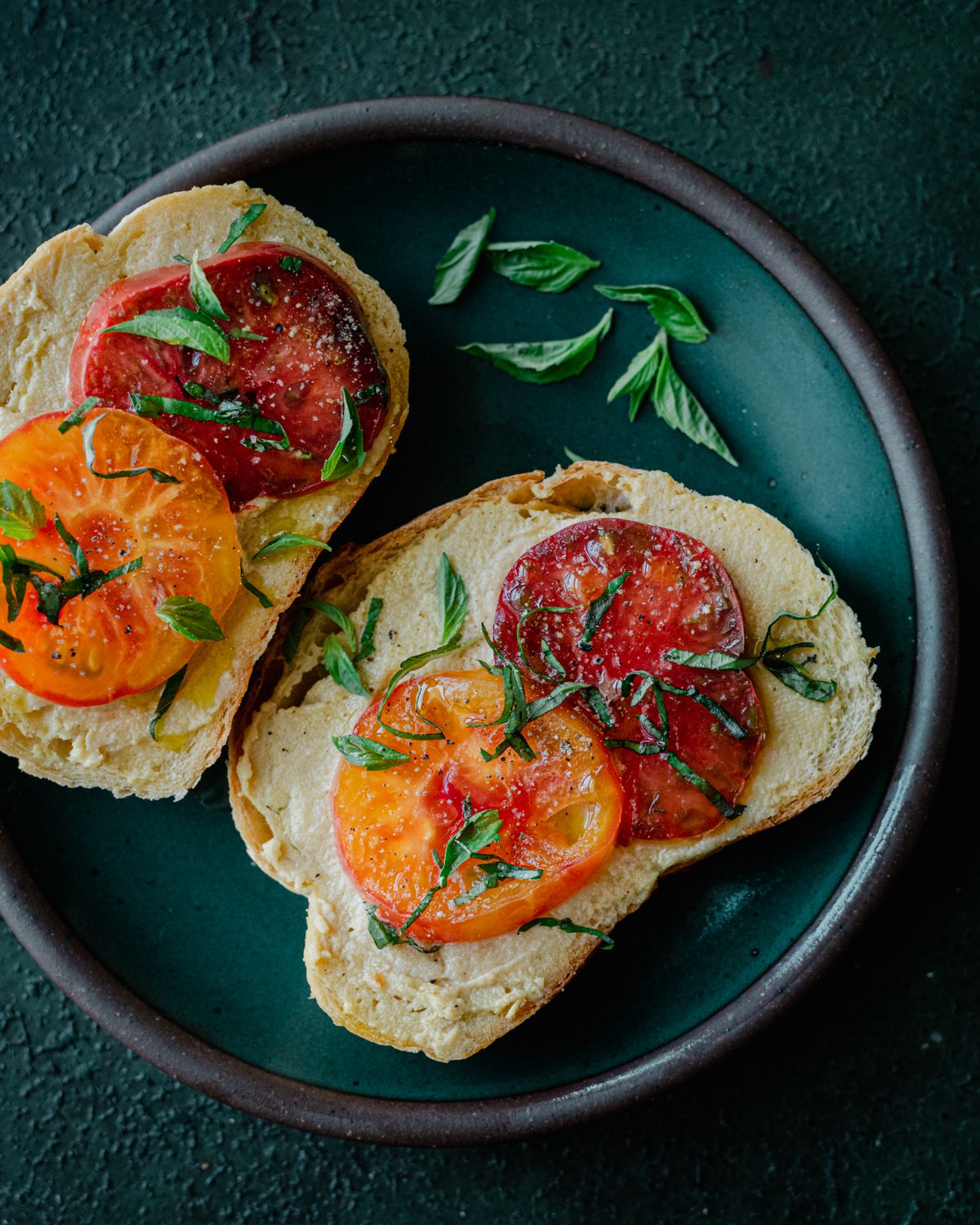
If you love this fermented cashew cheese, please leave a rating and review with your feedback and tag me on Instagram with your remakes :)
Fermented Cashew Cheese
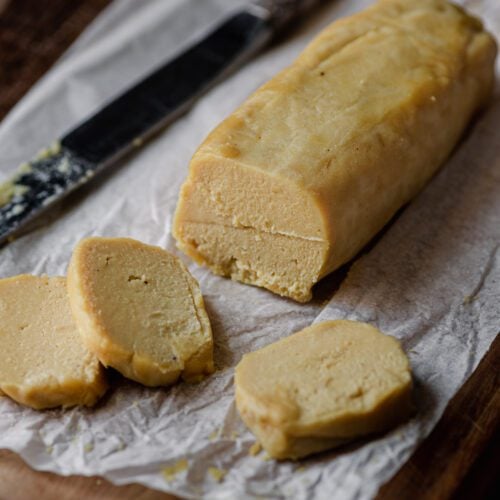
Ingredients
- 1 1/2 cups (200g) raw cashews, soaked in water overnight or for 8 hours or boiled in water on the stovetop for 15 minutes
- 2 tablespoons apple cider vinegar with the “mother”, shake the bottle to evenly distribute
- 1 tablespoon freshly squeezed lemon juice
- 3 tablespoons water
- 1/3 cup 67g refined coconut oil
- 1/2 cup ~25-30g nutritional yeast
- 3/4 teaspoon garlic powder (do NOT use fresh garlic!)*
- 3/4 teaspoon onion powder
- 1 1/4 teaspoons sea salt, more as needed
Instructions
- Drain the soaked cashews and rinse. Wash your glass jar and lid with warm soapy water and dry well.
- Add the cashews to a high-powered blender, along with the vinegar, lemon juice, water, and oil. Blend on medium or high speed, scraping down the sides as you go, until relatively smooth and creamy. Add the nutritional yeast, garlic powder, onion powder, and salt, and blend again until well incorporated and completely smooth. If you have a large blender container, like a 64 ounce jar, this will take several minutes, as you will need to scrape down several times, as there is very little liquid.
- Pour the mixture into a glass jar with an airtight lid. Seal and let the jar ferment in a warm place, for a minimum of 16 hours, or up to 48 hours.**If it’s summer, your kitchen counter works great. You can also place it in the oven with just the lightbulb on (be sure to not preheat your oven during this time and don't place it right next to the light, as it might get a little too warm). You can also ferment it outside if you live in a warm but temperate climate (no direct exposure to sun; loosely wrap the jars in a dish towel).
- Once the cheese has fermented, give it a stir and then refrigerate for at least 4 hours to firm up.
- Once the cheese has solidified, spoon half of it onto a sheet of parchment paper. Use a spoon to push it into a log-like shape. Roll up the parchment paper and use your hands and the parchment paper itself to mold and shape the cheese into a log shape. Repeat with the other half of the cheese in a second log. Refrigerate the cheese logs for 2 hours, or more, to set. Store leftovers wrapped in parchment paper in the refrigerator for at least 2 weeks.
Notes




I made this with ACV – it was delicious! I’m wanting to make it again but I’m out of ACV. Can I sub with white wine vinegar or white vinegar (not with the mother) or does it need to be ACV with the mother in order for this to work/be safe?
Hi Darcy, the reason we use apple cider vinegar is because it has “the mother”, and that’s needed to help ferment the cashew cheese mixture. Regular vinegar doesn’t contain that so it wouldn’t work. If you have access to plain unsweetened vegan yogurt, you can use 3 tablespoons of that instead, it works great.
Hello! Will this cheese taste better if I add probiotic capsules to this recipe?
Hi Jovana, live bacteria is created during the fermentation process. We haven’t tried adding probiotic capsules, but you could give it a try!
Hi thank you for the recipe, the cashew cheese is quite tasty just after blending. How do I know that it has reached the right level of fermentation, should I expect a change in the taste? How would I know if it has over fermented, would it be sour and have a vinegar smell?
Hi Susan, typically the signs it’s fermented are you start to see some air bubbles (they might be small if the fermentation area is not very warm). You can also give it a small taste – and it should taste more developed than regular cashew cheese.
Can I use unrefined coconut oil?!
Yes, why not. It’s basically the same, just has some coconut flavour.
Hi Ann, we don’t recommend it because it has a strong coconut flavor. If you don’t mind this you can go ahead and try it out, but we recommend using refined coconut oil for this recipe.
Thank you! I had the same question! Did it taste OK?
Can miso paste be added to this recipe or would it be better to add after the fermentation process?
Thanks
Hi Siobhan, I think you could absolutely add miso for a more developed savory flavor! Good luck!
Love the simplicity but the complexity taste of this cheese. Well done.
Thank you !
Hi Manon, it’s great to hear you had success with the recipe. Thanks for the review!
I accidentally used dry roasted cashews!! It doesn’t exactly taste fermented after 48 hours in the oven with the light on… has anyone ever used roasted cashews?? Help
I made this recipe and it tastes good, but I saw no fermentation action, unfortunately. I left it out for the full 48 hours in hot weather (30 degrees+). Not sure why it didn’t ferment. Will have to try again.
Is there a replacement for the coconut oil? I am looking for the possible oil free recipe? Thank you!
Hi PK, no oil-free substitute in this recipe unfortunately. Have you tried our vegan queso or nut-free vegan cheese sauce? Those are the ones I’d recommend!
my vitamix cooked the cashews so to speak. I think I over blended because the mixture was hot and the oil seems to have separated. The flavor is dynamite and it’s unbelievably smooth. It is still okay to ferment it and proceed with the rest of the recipe even though it is hot and oily?
Same! Any suggestions?
Same here! How did it come out?
Hi, I still love that cheese and so do all my friends!
I just wonder what the measurment is for your nutritional value, is it per 100 grams or per serving? Thanks for all your yummy recepies.
Hi Auletta, we haven’t measured the volume of a serving but the nutrition facts are for the full recipe divided into 16 slices. We hope that makes sense and we are so happy you enjoy the cashew cheese :)
Do you think this could work with sunflower seeds?
Hi Samara, sunflower seeds have a pretty distinctive taste that tends to overwhelm the flavors in vegan cheeses like this. We typically only use sunflower seeds in nut cheeses or creams when there are other strong flavors, like lots of spices.
Just want to say thanks so much for this recipe. The whole family love it and says its better than the expensive shop bought stuff.
Thank you for your lovely comment, Susan! It makes us happy to know that everyone enjoyed the recipe.
I absolutely love this vegan cheese. The consistency is really fabulous. I’m wondering if I can freeze it because I made too much. I’m going away for two weeks. Thank you for the recipe.
Thanks for the lovely review, Sonia! :)
Can this be frozen? Thanks so much!
Hi Samantha, we haven’t tried it with this particular recipe, but based on our experience with similar recipes, you should be able to freeze it with pretty decent results, though there will be a slight change in texture. Freeze for up to 3 months and defrost in the fridge.
Hi Nisha,
Firstly, I’d like to say that every recipe I’ve tried from your book and your blog has been AMAZING!
I would never try to make my own cheese if it wasn’t because of you and my trust in your recipes.
I have a question: how do I know if the cheese has been fermented? I’ve kept it outside for 48 hours now (average temp 21 to 31 degrees Celsius). I just tasted it and although it tastes nice, I’m not sure if it’s been fermented yet. Are there any signs I can tell enough fermentation has happened? Is it okay if I keep it outside for another day?
Thanks
J
Hi J, thank you so much for the kind words! :)
Sorry we didn’t get to your question on time, but typically the signs are you start to see some air bubbles (they might be small if the fermentation area is not very warm). You can also give it a small taste – and it should taste more developed than regular cashew cheese. I can’t advise you to ferment longer than 48 hours because I haven’t tried it myself.
Thanks. Used rejuvelac (from wheatberries) instead of ACV, lemon juice, and water. 48 hrs fermentation. Paired with your naan recipe. Came out delicious. Thank you!
We’re glad to hear the recipe was a success, Mike!
This was a huge hit at the party! I covered it in paprika for some extra color. I would love to see variations others have done like adding figs etc!
Tina, So glad to hear everyone loved this recipe! Unfortunately this cheese can’t be fermented with fresh fruits and veggies but feel free to add figs in before stirring and refrigeration!
Hello, I’m going to make this, this weekend! It’s getting cold here and always about 68 in our house. If I put it in the oven with the light on would I still leave it at your recommended time frame (16-24hrs?)
Also, can I just leave it in the container to scoop out instead of putting it in a log form?
Thank you!
Hi Katie, I think 16 to 24 hours in the oven with the light on should be good (I’ve done that in the past). The log shape is so that the cheese is easy to slice like a conventional soft cheese, but if that it isn’t important to you, you can skip that step. The flavor will still be great.
Thank you for the reply! I made it and love it!!
This is the best cashew cheese recipe I’ve ever made. I doubt the batch and add smoked paprika and I sift red pepper flakes to catch the seeds while using some of the flesh from the peppers for a pepper jack type or I add minced dried figs and walnuts to my logs. Next time I will add some fresh basil, garlic and toasted pine seeds for a pesto type cheese! I usually let my logs sit for a month in the fridge and they just get better and better!
Thanks for sharing, Kiki! Those cashew cheese flavor combos sound insanely delicious!
What was it like after a month?